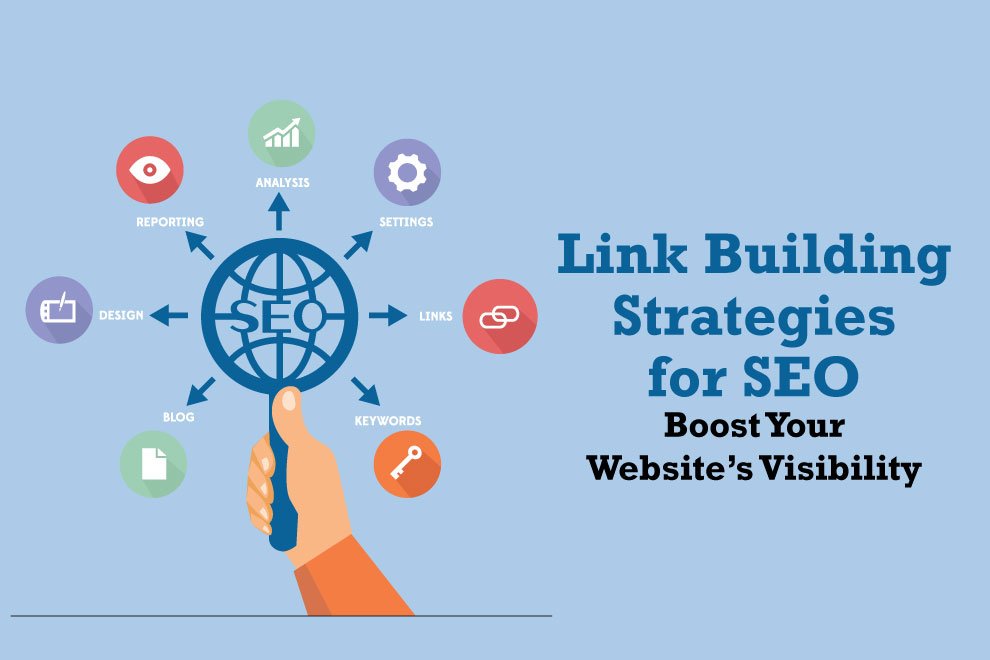Boosting your website’s visibility in search engine results is essential for attracting more visitors. But how can you improve your domain authority and rankings effectively? Industry professionals unanimously agree that implementing strong SEO link-building strategies is the key to achieving this goal.
If you’re looking to discover SEO link building strategies that can propel your site to the top of search engine results, you’ve come to the right place. Here are the best strategies for SEO.
1. Prioritize Quality over Quantity for Backlinks
Natural backlinks are pivotal for boosting your business website’s SEO. However, these links must originate from websites with high authority. Quality should always take precedence over quantity when it comes to your backlinks. If your webpage lacks valuable content, it won’t attract links from reputable publications. Therefore, you need to build strong links flowing both into and out of your website. This necessitates finding engaging and relevant pages to enrich your content.
2. Utilize Social Media
Increasing inbound links can be indirectly achieved by actively engaging with reporters and bloggers in your niche on social media. Building and expanding your brand’s online presence can expand your audience reach, increase page views, and potentially generate new links over time.
Here are some guidelines for using social media for link-building:
- Strategic use of hashtags: Using relevant hashtags on platforms like Twitter can attract the attention of reporters searching for information related to your content.
- Active participation on industry-specific platforms: Engaging in discussions and commenting on other bloggers’ posts can enhance your brand visibility.
- Identify journalists seeking information: Keep an eye out for hashtags like #prrequest or #journorequest as potential linking opportunities that align with your brand’s expertise.
These tactics showcase your active involvement in industry conversations and help you build relationships with fellow bloggers who may consider featuring your content in the future.
3. Create Link-worthy Content
To attract backlinks, your content must be worth linking to. Link-worthy content usually has a broad appeal and often occupies the top level of the marketing funnel. Editors prefer to link to pages that resonate with their audience, so the more your content appeals to readers, the more likely they are to link to it.
Link-worthy content is also informative, offering solutions to common problems or addressing frequently asked questions. To generate more link-worthy content, assess your current content for areas of improvement.
Examples of link-worthy content include:
- Inspirational content
- Evergreen content
- Instructional articles
- Educational material
- Entertainment
- Information on data and trends
- Industry-beneficial research
In essence, your content should answer questions and solve problems uniquely to attract backlinks.
4. Build Connections Through Images
Images naturally grab attention and occupy significant space, making them ideal for attracting backlinks. Create various types of images, such as infographics, product shots, graphics, or comics, and promote them to draw in more backlinks. However, when using images as backlinks, ensure they direct users to the page where the image is hosted, rather than image directories (with extensions like .gif, .png, .jpg, etc.).
Identify any backlinks leading to image directories using SEO tools and request that website owners replace them with links to the image’s correct location. Additionally, perform a Google Images search to monitor the use of your images and request proper attribution when necessary.
5. Employ Influencer Marketing
Social media influencers can be a valuable resource for tapping into new markets without hefty spending on traditional advertising. They excel at generating backlinks through their social media presence and collaboration mentions on your website.
Influencers often share links to their collaborations or mention your brand, driving increased website traffic, boosting rankings, and attracting fresh backlinks.
6. Use Anchor Texts
Anchor text serves as a guide for search engine-optimized content, helping Google understand your web page’s content and its relevance to searches. To strengthen a website’s theme, use a variety of related anchor text.
Incorporating the language or dialect of your target audience in your anchor text demonstrates familiarity with their communication style, establishing a natural rapport. Additionally, discussing local keywords in detail can amplify your local footprint.
Bottom Line
In conclusion, link building is not as complex as it may seem. The strategies we’ve discussed can be applied to any website with the right implementation. While some tactics may yield better results for certain sites, experimentation is key to finding what works best for you.
Once you’ve identified the most effective methods, focus on expanding your efforts to generate more links with minimal exertion.










